Tyrosine Kinase
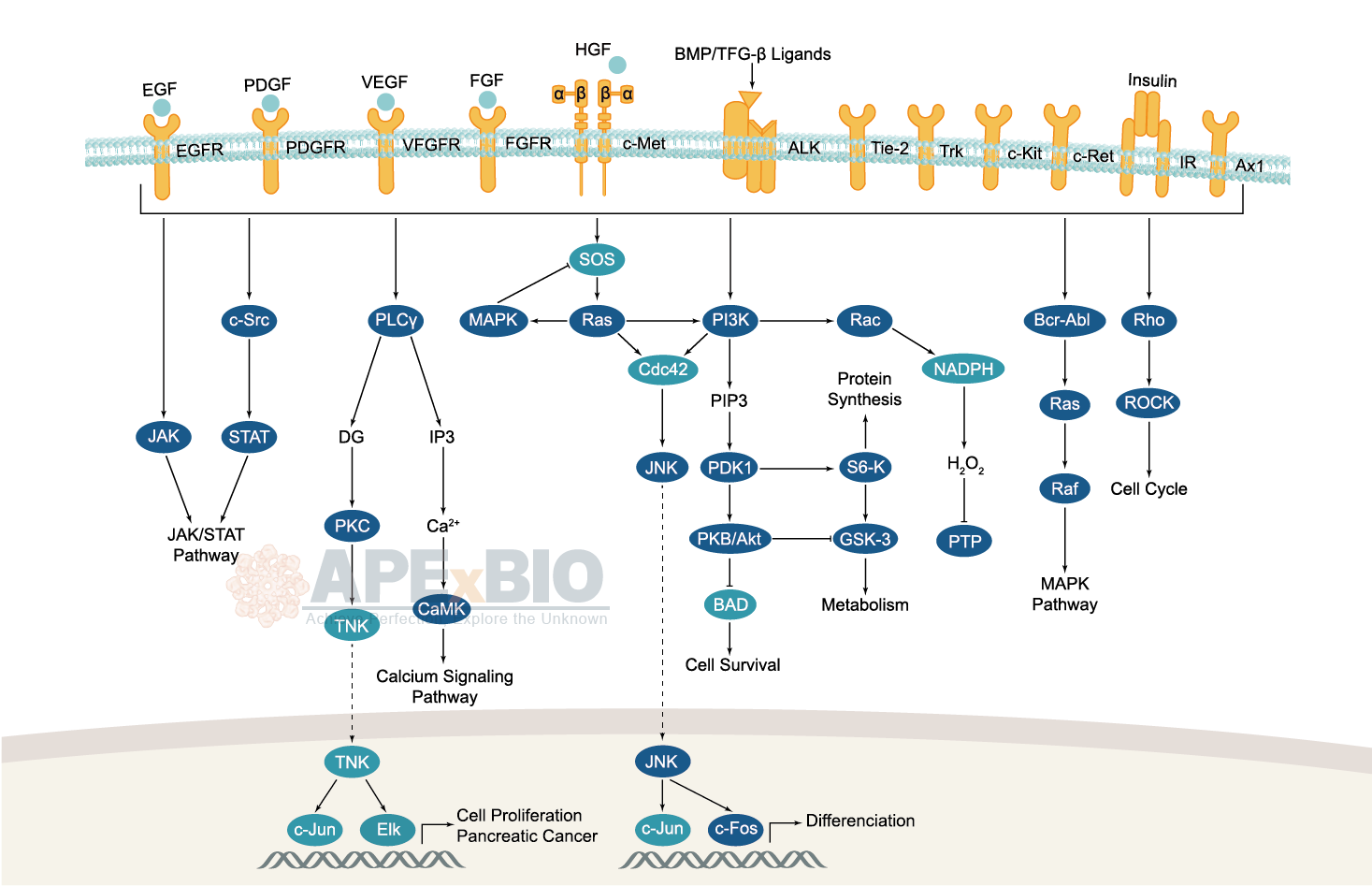
Receptor tyrosine kinases bind to extracellular ligands/growth factors, which promotes receptor dimerization and autophosphorylation of receptor tyrosine residues. This triggers a cascade of downstream events through phosphorylation of intracellular proteins that ultimately transduce the extracellular signal to the nucleus, causing changes in gene expression. Receptor tyrosine kinases include EGFR/ErbB, PDGFR, VEGFR, FGFR and MET subfamilies etc. Dysfunctions in tyrosine phosphorylation are linked to oncogenic transformation. In additions, various adaptor and effector proteins couple to carboxy-terminal of an active kinase. For instance, binding of the GRB2 adaptor protein activates EGFR and MAPK/ERK signaling.
Non-receptor tyrosine kinases involve many well-defined proteins (e.g. the Src family kinases, c-Abl, and Jak kinases) and other kinases which regulates cell growth and differentiation. For example, Src family kinases are curial for activating and inhibitory pathways in the innate immune response.
-
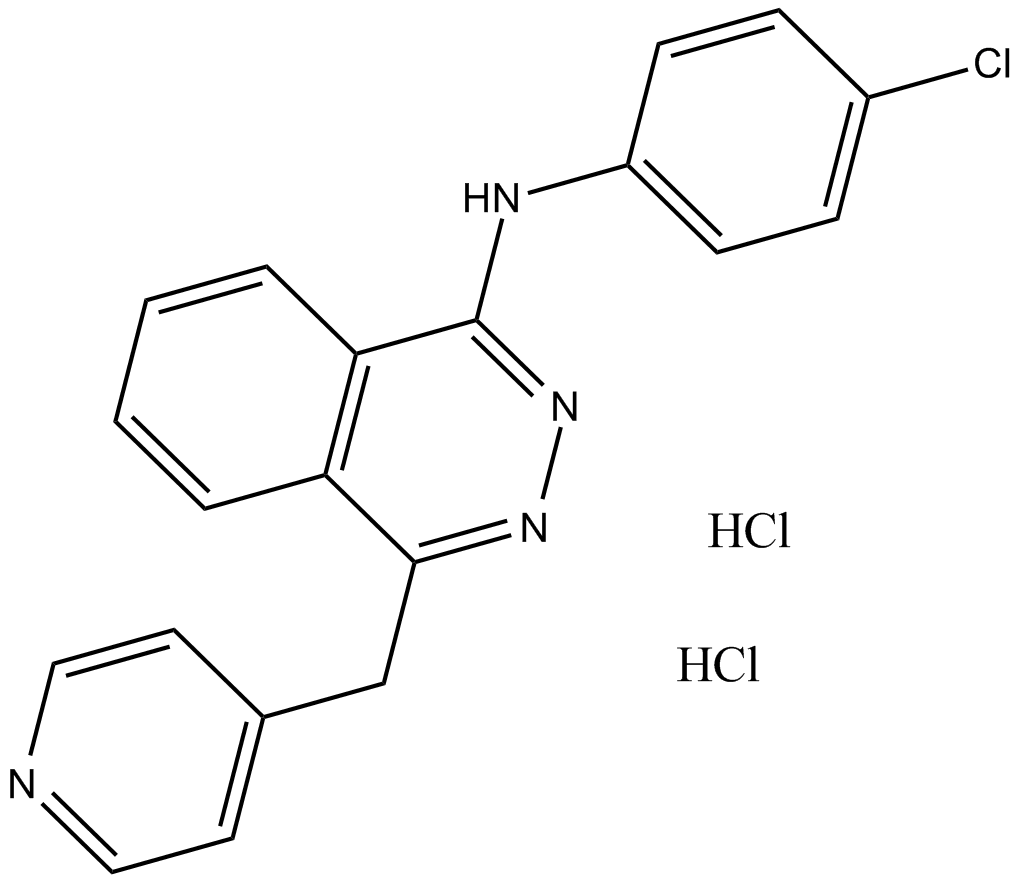 A1778 Vatalanib (PTK787) 2HClTarget: VEGFRSummary: Tyrosine kinase receptor inhibitor
A1778 Vatalanib (PTK787) 2HClTarget: VEGFRSummary: Tyrosine kinase receptor inhibitor -
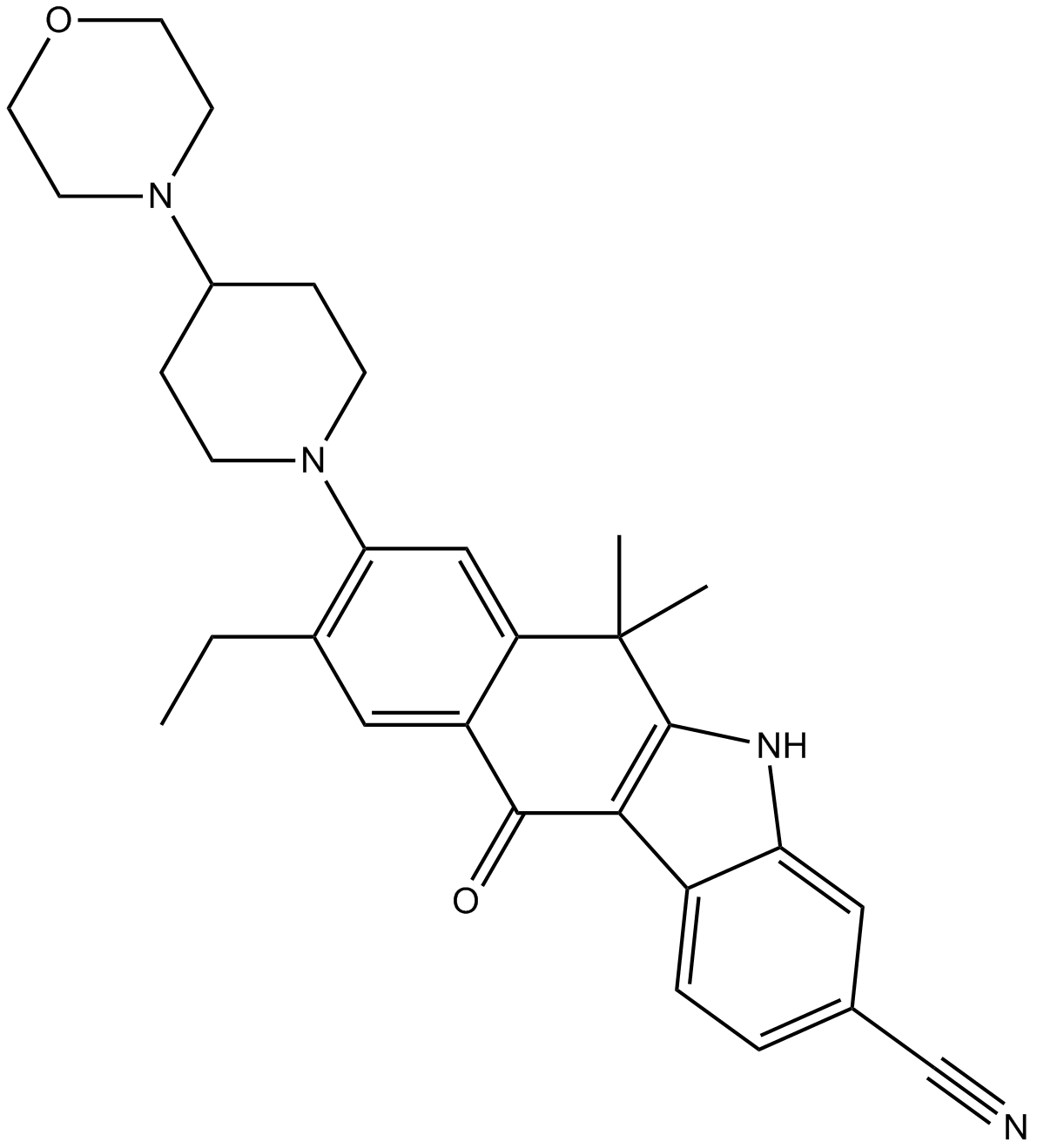 A8393 CH5424802Target: ALKSummary: ALK inhibitor,potent and ATP-competitive
A8393 CH5424802Target: ALKSummary: ALK inhibitor,potent and ATP-competitive -
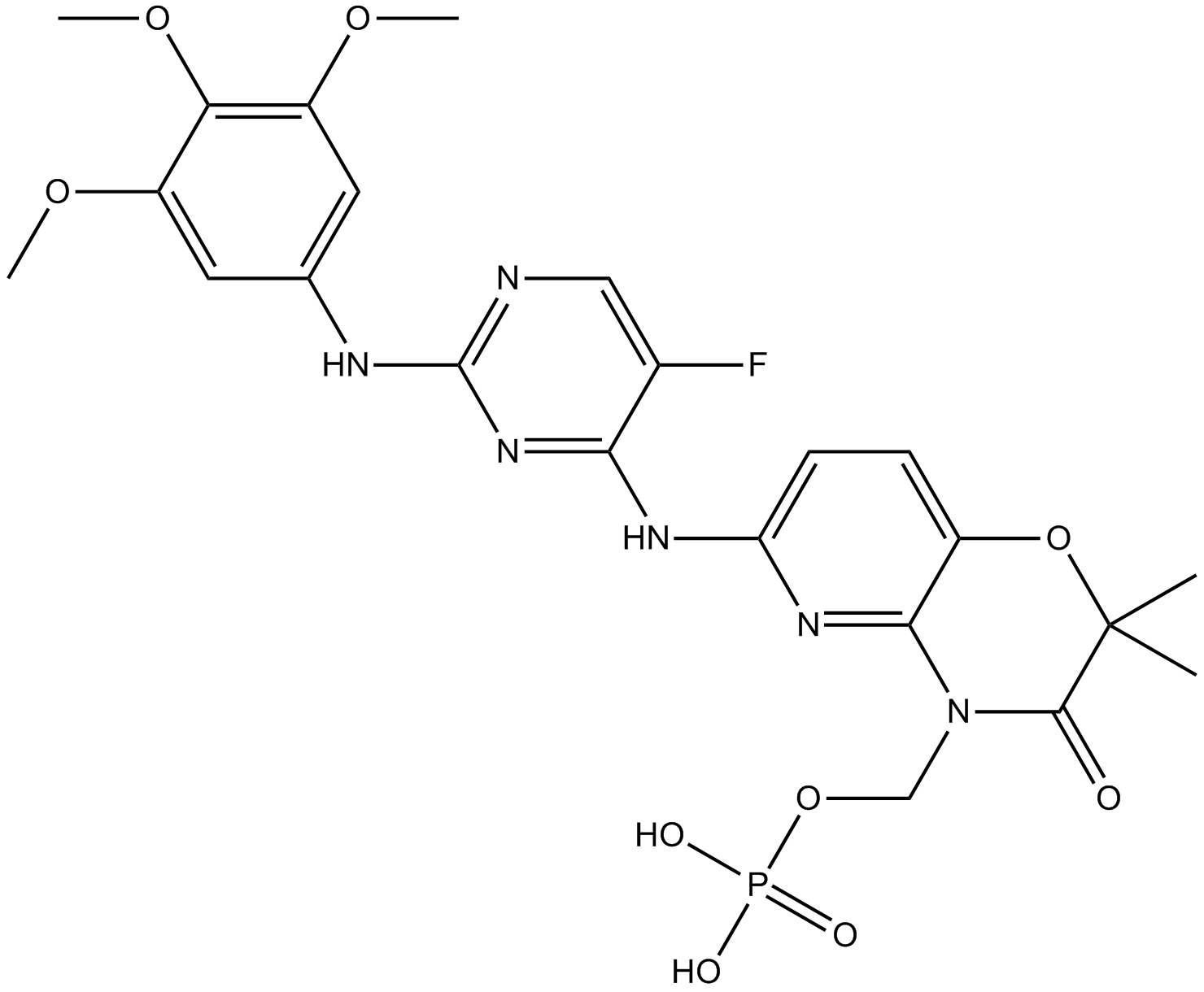 B2284 Fostamatinib (R788)Target: SykSummary: Spleen tyrosine kinase (Syk) inhibitor
B2284 Fostamatinib (R788)Target: SykSummary: Spleen tyrosine kinase (Syk) inhibitor -
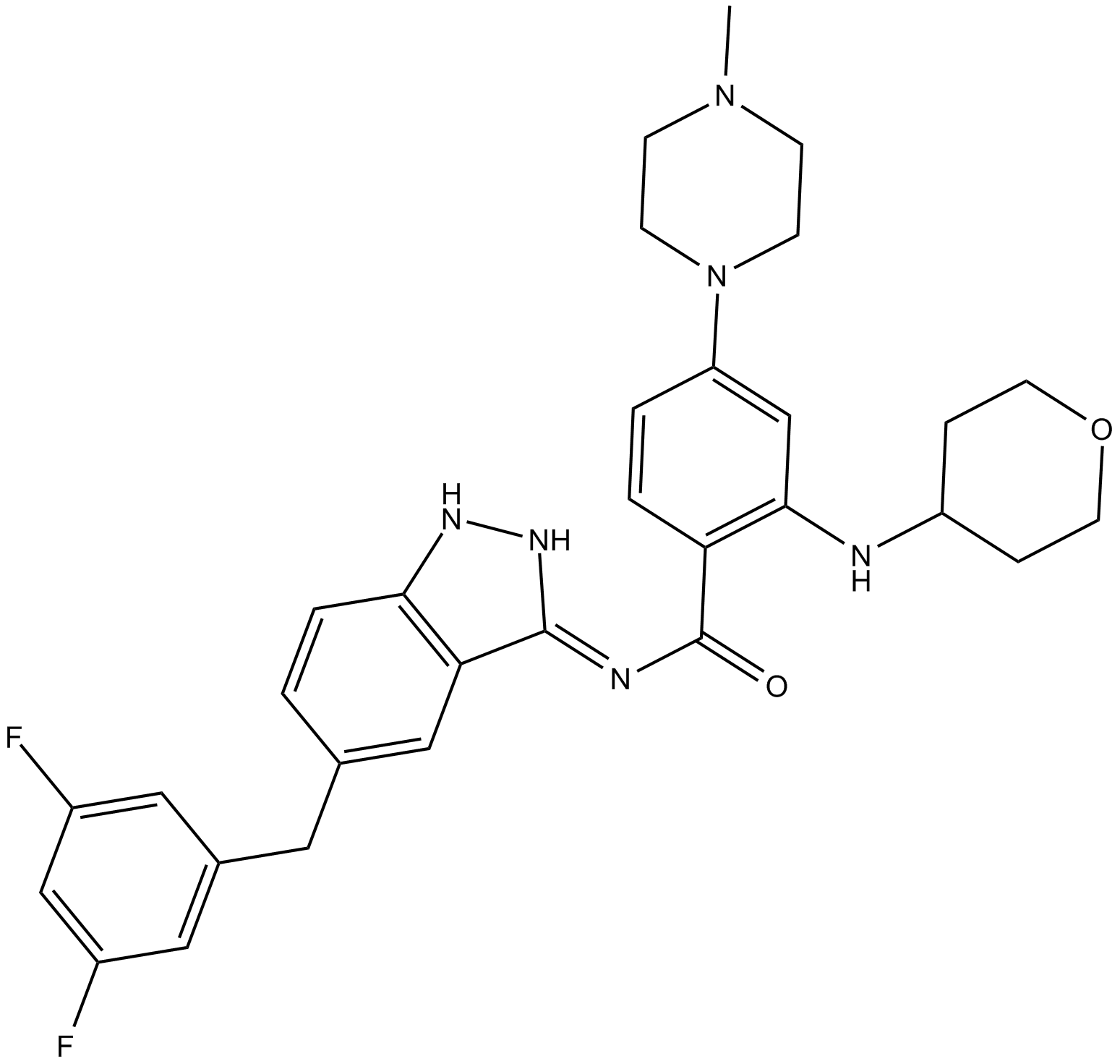 B5859 EntrectinibTarget: Trk Receptors|ALK|ROS1Summary: Orally active inhibitor of ALK kinase
B5859 EntrectinibTarget: Trk Receptors|ALK|ROS1Summary: Orally active inhibitor of ALK kinase -
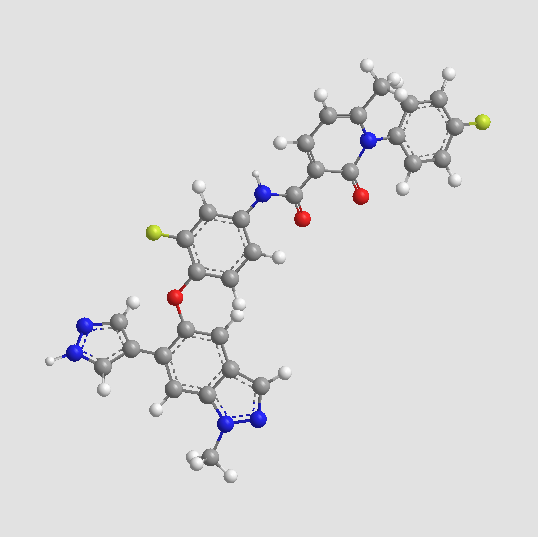 A3573 LY2801653Target: METSummary: MET inhibitor
A3573 LY2801653Target: METSummary: MET inhibitor

